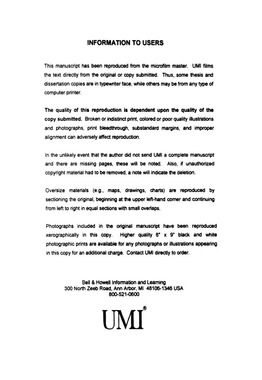| dc.contributor.advisor | Maiden, Jeffrey, | en_US |
| dc.contributor.author | Beckham, James Dale. | en_US |
| dc.date.accessioned | 2013-08-16T12:18:05Z | |
| dc.date.available | 2013-08-16T12:18:05Z | |
| dc.date.issued | 2001 | en_US |
| dc.identifier.uri | https://hdl.handle.net/11244/262 | |
| dc.description.abstract | Multiple regression was used to identify any significant predictors of affirmative voting percentages at the .05 level of confidence, and a regression equation was developed from this analysis. Only one variable, the percentage of technology funding in bond issues, was determined to be significant, which indicated that as technology funding percentage increased---affirmative voting percentage increased also. The resulting regression equation was: YESVOTE = 64.908 + .137 x TECH. | en_US |
| dc.description.abstract | Logistic Regression was used to identify significant predictors of successful (greater than or equal to 60% affirmative voting percentage) or unsuccessful (less than 60% affirmative voting percentage) bond elections. Two factors were significant: percentage of technology funding in bond issues and fiscal year of the bond election. The odds ratio of percentage of technology funding suggested that as technology funding increased in a bond issue, the chances of election success increased. The odds of a bond issue passing, however, was almost six times greater if it contained at least some funding for technology compared to a bond issue with no technology funding when using frequencies to calculate the odds ratio. Fiscal year 1996--1997's odds ratio indicated that a bond election had a greater chance of failure if held during that year. | en_US |
| dc.description.abstract | One primary factor was investigated: the percentage of technology funding accounted for in bond issues. Four secondary factors were investigated: the number of students enrolled in the schools, the dollar amount of the bond issues per student enrolled, the fiscal year the bond elections were held, and the time of year the bond elections were held. | en_US |
| dc.description.abstract | The purpose for conducting this study was to determine the extent of the relationship, if any, between technology inclusion and the success or failure of building bond issues in Oklahoma. The study's sample includes 369 public Oklahoma school districts that held building bond elections from fiscal years 1995--1996 through 1999--2000 and the respective bond issues associated with them of which there were 522. Data were collected from the files of the Oklahoma State Department of Education, school bond consulting firms, and through personal contact. | en_US |
| dc.format.extent | ix, 95 leaves ; | en_US |
| dc.subject | School elections Oklahoma. | en_US |
| dc.subject | Political Science, General. | en_US |
| dc.subject | School bonds Oklahoma. | en_US |
| dc.subject | Referendum Oklahoma. | en_US |
| dc.subject | Education, Technology of. | en_US |
| dc.subject | Educational technology Oklahoma. | en_US |
| dc.subject | Education, Finance. | en_US |
| dc.title | An examination of the influence of technology inclusion in determining the outcome of school bond issue elections in Oklahoma. | en_US |
| dc.type | Thesis | en_US |
| dc.thesis.degree | Ph.D. | en_US |
| dc.thesis.degreeDiscipline | Department of Educational Leadership and Policy Studies | en_US |
| dc.note | Source: Dissertation Abstracts International, Volume: 62-01, Section: A, page: 0085. | en_US |
| dc.note | Major Professor: Jeffrey Maiden. | en_US |
| ou.identifier | (UMI)AAI3000737 | en_US |
| ou.group | Jeannine Rainbolt College of Education::Department of Educational Leadership and Policy Studies | |
